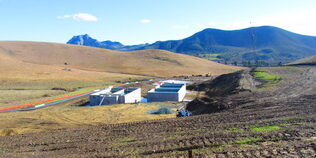Morro Bay City Council’s deceives the public, promotes sewer project
August 14, 2021

Writer’s Note: This is part two of a story, told in installments, about the corruption involved in Morro Bay’s water reclamation facility. Part one is about Morro Bay City Council’s bait-and-switch.
OPINION by CYNTHIA HAWLEY
The Morro Bay City Council lied about the size of the sewage treatment project during the approval, permitting, funding, and bidding processes and is still lying about it.
Along with telling someone something that is false, it’s also a lie to withhold or conceal or even suppress needed or important information. Public agencies can lie by disseminating false information and withholding the truth, and by illegally shifting public processes to eliminate the events when information is required to be told. The city council has lied in these ways.
This particular series of lies about the city’s sewage treatment plant began at the Sept. 2018 rate increase hearing and the Oct. 2018 meeting when the Morro Bay city council members did the bait and switch that involved both fake information and withholding the truth.
At the September rate increase hearing they lied about what they were going to build for the money, saying it was to be a “rebuild” and “replacement” of the existing treatment plant. They skipped disclosure and approval of the project at a public meeting, and in October contracted to build it without disclosing what was to be built.
The city council members also conspired with the California Coastal Commission to eliminate all local public permit hearings at which project plans would have been required. But that’s another story.
After the rate increase hearings and contract approval, the deception shifted to lying about the project’s size. What is being built has two headworks with the capacity to process a total of 16.28 million gallons of sewage a day compared to the existing plant with the maximum processing capacity of 6.64.
Here is the deception in the March 2018 Environmental Impact Report (EIR) for the project: “… the proposed WRF would treat a maximum average annual daily flow rate of 0.97 MGD, which is a slight decrease in treatment capacity from the existing WWTP.” (See page 5-8). The EIR was a sham because the true capacity of the proposed facility was not disclosed and was not used to determine possible impacts.
The number 0.97 million gallons in Table 3-1 is an average of how much sewage the city produces in a day — obviously not a description of the project.
Fast forward to the California Coastal Commission’s July 11, 2019 permit hearing for the project. Under the heading “Project Description” the staff report describes the project as “… construction of new 0.97-million-gallon-per-day average daily flow tertiary-treated wastewater treatment and water reclamation facility …” and as “Construction of a new 0.97 million-gallon-per-day (MGD) water reclamation facility … .”
This is what the coastal commission approved and consequently, as seen below, it is what was permitted.
After the commission’s hearing the number was rounded up to one million and the city submitted three sets of plans to the commission that say, “The Project includes construction of a new one million gallon per day advanced treatment facility on South Bay Boulevard north of Highway 1.” The full capacity of the plant to process sewage was not disclosed.
The permit issued by the coastal commission on Nov. 8, 2019 is for a “… 0.97-million-gallon-per-day average daily flow tertiary-treated wastewater treatment and water reclamation facility… .” This is not what is being built.
The city even lied to the U.S. Environmental Protection Agency in the low interest loan agreement. In the “Schedule I Project Budget” of the March 9, 2020 federal WIFIA Credit Agreement the city council told the federal government that the loan money is for a “0.97 million gallons per day WRF”. Search for 0.97.

How do these lies shake out in the bidding process? Consider the ramifications of a developer lying about the size of a project in an invitation to contractors to bid on its construction. For example, when and how would the selected contractor be informed that the actual project to be built is not the project described in the invitation or in the development permit?
Ask the Morro Bay City Council how that gets worked out because this is exactly what they did.
The city’s April 2020, “Invitation for Bids Water Reclamation Facility (WRF) Phase II” describes the project as “construction of a 1 million gallons per day water reclamation facility for the City of Morro Bay.”
The city did the same thing in its Oct. 2020 “Notice to Consultants Request for Proposals/Qualifications and Contract for … Lift Station and Offsite Pipelines Construction” which says: “The WRF Project includes construction of a new one million gallon per day advanced treatment facility.” Look under the heading “General Work Description.”
This is quite a tangled web of lies. When and how were the contractors informed that the actual project involves two headworks with the combined capacity to process 16.28 million gallons a day and the pipelines necessary for conveying far more sewage than one million gallons a day?
Another consequence of lying in public documents is that the falsification of a public record that is submitted to a public agency is a felony under California’s Penal Code.
As of the time of this writing, the lie about the “rebuild” and “replacement” that the city council members kicked off on Sept. 11, 2018 that morphed into the lie of a “one million gallon per day advanced treatment facility” is still being told on the city’s web site.
The city council members have never told ratepayers the truth about what they are spending our money on.
Cynthia Hawley is a land use and environmental protection attorney. She lives in Morro Bay and has lived on the coast of San Luis Obispo County for 45 years.






The comments below represent the opinion of the writer and do not represent the views or policies of CalCoastNews.com. Please address the Policies, events and arguments, not the person. Constructive debate is good; mockery, taunting, and name calling is not. Comment Guidelines